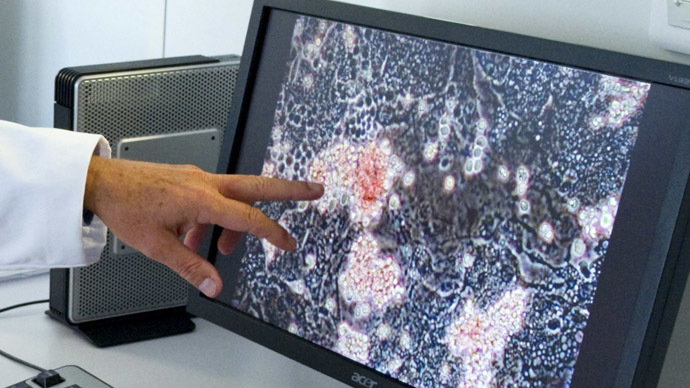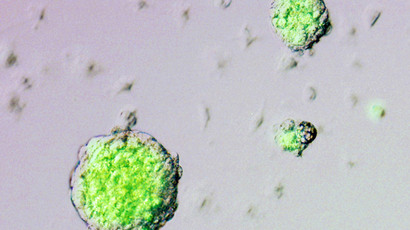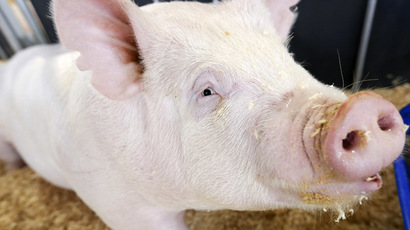Second life: Scientists ‘reset’ human stem cells to ‘blank state’

Scientists have learned to “reset” human stem cells to their earliest state. This breakthrough gives hope for millions of people suffering from incurable conditions, like Parkinson’s Disease, as scientists hope their success would lead to cures.
British and Japanese scientists have managed to reboot stem cells to the state equivalent 7 to 10-day old embryo, before it implants in the womb.
“These cells may represent the real starting point for formation of tissues in the human embryo,” said Austin Smith, director of the Britain's Cambridge Stem Cell Institute, who co-led the research. “Capturing embryonic stem cells is like stopping the developmental clock at the precise moment before they begin to turn into distinct cells and tissues.”
Studying the reset cells could lead to a better understanding of human development and how embryo development can go wrong, cause miscarriages and developmental disorders.
"We hope that in time they will allow us to unlock the fundamental biology of early development, which is impossible to study directly in people," Smith said.
In the future, this knowledge could allow the production of safe and more reproducible starting materials for a wide range of applications including cell therapies, scientists said in the study, published in Cell Journal.
Until now it was only possible to produce what in scientific language is called pluripotent stem cells in the lab either from cells extracted from a very early stage embryo or from adult cells that have been induced into a pluripotent state.
Human pluripotent stem cells are first of all valuable because of their unique capability to become any of the cells and tissues in the body.
However, scientists have been trying to generate human pluripotent stem cells that are truly pristine (also known as naïve). Before they succeeded, researchers have only been able to derive cells that are slightly further down the developmental pathway, not a totally "blank slate," scientists say.
What happened now is that British and Japanese scientists have managed to induce a ground state by rewiring the genetic circuitry in human embryonic and induced pluripotent stem cells, the University of Cambridge explains.
It is much easier to control the process of generating stem cells in mouse cells which can be frozen in a state in their naïve or “blank state” using a protein called LIF. But this is not the case with human cells, which are not as responsive to LIF. That means they require different control, involves switching key genes on and off.
For this reason scientists have been unable to generate human pluripotent cells that are as primitive or as consistent as mouse embryonic stem cells.
To avoid this problem, the scientists introduced two genes – NANOG and KLF2 – which caused a network of genes controlling the cell to reboot and induce the early pluripotent state.
So now, those “reset cells” share many of the characteristics of authentic naïve embryonic stem cells isolated from mice, suggesting that they represent the earliest stage of development.
“Scientists have perfected a reliable way of doing this with mouse cells, but human cells have proved more difficult to arrest and show subtle differences between the individual cells. It’s as if the developmental clock has not stopped at the same time and some cells are a few minutes ahead of others,” Smith said.
Experts say that by helping to regenerate tissue, stem cell science could offer new ways of treating conditions for which there are currently no cures – including heart and eye diseases, Parkinson's and strokes.
But there is still a lot of research required.
"We now need to carry out further studies to establish how our cells compare with others," said Yasuhiro Takashima, of the Japan Science and Technology Agency, who worked with Smith. "We don't yet know whether these will be a better starting point than existing stem cells for therapies, but being able to start entirely from scratch could prove beneficial."














